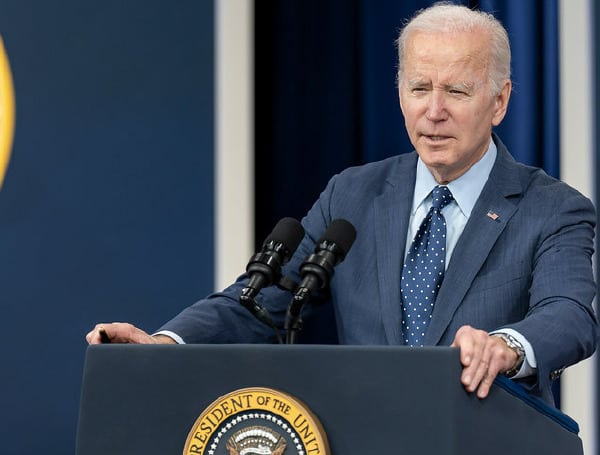Tropical Storm Idalia is intensifying, and the potential impacts on Florida’s Gulf Coast are becoming more concerning.
As of Monday morning, Hurricane Idalia was still at tropical-storm strength with maximum sustained winds of 65 mph.
However, the forecast indicates that the storm is projected to rapidly intensify and reach Category 3 hurricane strength by the time it makes landfall. The landfall is expected to occur in the northeast Gulf’s Big Bend region on Wednesday morning and could bring a storm surge of up to 11 feet in some areas.
Florida Emergency Management Director Kevin Guthrie said Monday during a news conference that the storm is moving at a “strengthening intensity,” and people north of Tampa Bay will be affected regardless of the forecast “cone.”
In the news: Tropical Storm Idalia Moves Toward Florida, Expected To Strengthen Into Major Hurricane
On Sunday, Florida Governor Ron DeSantis submitted a request for aid to the White House, which President Biden approved Monday.
This declaration allows for federal resources and assistance to be mobilized quickly to support state and local efforts in responding to the hurricane’s impacts.
“We’ve seen this before with something like Hurricane Michael, that continues to gather strength,” DeSantis said, referring to a 2018 storm that caused massive damage in parts of Northwest Florida. “So, this is going to be a major impact and Floridians should expect that this storm will be a major Category 3-plus hurricane. So, please prepare accordingly.”
A tropical storm officially becomes a hurricane when its maximum sustained winds reach or exceed 74 miles per hour (mph). At this point, it is considered to have transitioned from a tropical cyclone with lower wind speeds to a more powerful and potentially destructive storm.
Hurricanes are categorized on the Saffir-Simpson Hurricane Wind Scale, which ranges from Category 1 (weakest) to Category 5 (strongest). A Category 3 hurricane is characterized by maximum sustained wind speeds of at least 111 mph. These storms are classified as “major hurricanes” and can cause extensive damage to buildings, trees, power lines, and infrastructure, as well as pose significant threats to coastal areas due to storm surge and heavy rainfall.
In the news: Florida Gov. DeSantis Directs $1.1 Million To University, Families In Hate-Crime Murders
The National Hurricane Center’s (NHC) observation about the conditions being conducive for “rapid intensification” of the storm as it moves into warm waters of the southeast Gulf of Mexico indicates that the storm has the potential to strengthen quickly before making landfall.
“Idalia is now forecast to become a major hurricane before it reaches the gulf coast of Florida,” said the NHC. “The risk continues to increase for life-threatening storm surge and dangerous hurricane-force winds along portions of the west coast of Florida and the Florida Panhandle beginning as early as late Tuesday.”
Tropical-storm-force winds extend up to 70 miles away from the center of Idalia. In other words, within this radius, people and infrastructure are at risk of experiencing these strong winds.
“It should be emphasized that only a small deviation in the track could cause a big change in Idalia’s landfall location in Florida due to the paralleling track to the west coast of the state,” the NHC said.
A storm-surge watch was in effect from Chokoloskee, south of Everglades City, north to Indian Pass in the Panhandle. A hurricane watch was in effect from Englewood in Southwest Florida to Indian Pass. A tropical storm watch was in effect south to the lower Florida Keys, west of the Seven Mile Bridge.
Storm surge was predicted to reach up to 11 feet from the Aucilla River, near Tallahassee, to Chassahowitzka, south of Crystal River, according to the hurricane center. Tampa Bay could see a surge of 4 feet to 7 feet.
In the news: Pasco County Issues Evacuations For Zones A, B, C Ahead Of Idalia
The storm’s approach came as Florida grappled with cleaning up at least 29 gas stations — mostly in the Tampa region and Southwest Florida — after gasoline was contaminated with diesel fuel because of “human error” at the Port of Tampa.
“We’re working with (emergency management) to get those fields evacuated and replaced with clean fuel,” Agriculture Commissioner Wilton Simpson, whose department regulates gas stations, said. “By the end of the day we hope to have all of those gas stations identified, with fuel, and which ones can open up.”
DeSantis said officials expect little interruption in gasoline supply as tankers were being staged in Central Florida to help replenish supplies.
Android Users, Click To Download The Free Press App And Never Miss A Story. Follow Us On Facebook and Twitter. Signup for our free newsletter.
We can’t do this without your help; visit our GiveSendGo page and donate any dollar amount; every penny helps
